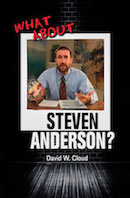866-295-4143, fbns@wayoflife.org
Until the late 19th century, bloodletting was one of the most common forms of medical practice, and it was an attempt to balance the “humors” according to ancient Greek practice.
The bloodletting was accomplished by knives and leeches and was performed by barbers as well as physicians. The red-and-white pole still used to identify barber shops is derived from this practice. Originally it signified bloody bandages wrapped around a pole.
“One British medical text recommended bloodletting for acne, asthma, cancer, cholera, coma, convulsions, diabetes, epilepsy, gangrene, gout, herpes, indigestion, insanity, jaundice, leprosy, ophthalmia, plague, pneumonia, scurvy, smallpox, stroke, tetanus, tuberculosis, and for some one hundred other diseases” (“Bloodletting,” Wikipedia).
The more severe the disease, the more blood was let! Before amputation, blood was removed equal to the amount estimated to be in the limb to be removed!
Countless people died untimely deaths because of the bogus practice of bloodletting. This was probably the cause of George Washington’s death at age 68 of septic throat when he was in good health overall. During a period of nine or ten hours, he was bled five times for a total of two and a half quarts of blood. This would have been nearly half of his total blood!
If ancient physicians had believed the Bible, they could have avoided this great error, for the Bible says, “For the life of the flesh is in the blood...” (Leviticus 17:11). That was written about 3,500 years ago, and modern medicine has confirmed it in stunning ways.
The body’s amazing circulatory system of heart, lungs, arteries, capillaries, and veins, transports the marvelous blood cells with their life-giving oxygen and other necessary elements to every part of the body. The blood also forms a major part of the infection fighting and clotting systems, which are necessary for the “life of the flesh.”
BLOOD CELLS
The human red blood cell (erythrocyte) is perfectly designed to carry oxygen throughout the body. Even evolutionary writings use terms such as “highly specialized” and “nature’s design” to describe these amazing things.
The blood cells flow in plasma through the body’s breathtakingly complex circulatory system, which is used to maintain the body’s temperature, regulate the body’s pH balance, provide communication, transport oxygen, nutrients, hormones, clotting agents, and immune defense mechanisms such as antibodies, white blood cells, and platelets, and remove waste. Blood flows everywhere in the body, from the roots of the hair to the toes.
The red blood cells are formed in the marrow of the ribs, pelvis, and some other bones. They are 1/25,000 of an inch in size. There are about 25 trillion of them in the body, and they live only 100-120 days. They must be replaced because they are unable to synthesize new enzymes to replace those lost during normal cell metabolic process due to their lack of organelles. The body replaces the blood cells at the rate of about 2.5 million per second, but that rate can be increased if the body needs more blood cells due to heavy bleeding or a reduction in oxygen content of the air at high altitude.
The main function of the red blood cell is to carry oxygen throughout the human body, and it is perfectly designed for this. First of all, its shape, which is biconcave and looks similar to a donut, allows more surface area to facilitate absorption and diffusion of oxygen. The shape of the red blood cell also allows it to contort through minute blood capillaries that are smaller in diameter than itself and spring back to its original shape. Further, it can carry more hemoglobin molecules because it loses its nucleus, and its internal organelles (cell organs) are degraded soon after it is made, and it thus has more storage capacity than other types of cells in the body. Each red blood cell carries about 300 million hemoglobin molecules.
The hemoglobin (or haemoglobin) molecule that is carried within the red blood cell (and gives it the bright red color) is a miracle of design in its own right. It is an iron-containing protein that allows oxygen to be picked up from the lungs and carried through the fluid of the circulatory system. The hemoglobin molecule has a single atom of iron at its center, and in the lungs this iron atom combines with oxygen to create a compound called oxyhemoglobin. Oxygen by itself is not very soluble in water, but the hemoglobin molecule binds four oxygen molecules to itself, “consequently hemoglobin permits human blood to carry more than 70 times the amount of oxygen that it could have carried otherwise” (
After the hemoglobin transports its oxygen to cells in the body, it reinvents itself as a waste disposal entity. Combining with the carbon dioxide given off by the cells as waste, it carries this back to the lungs to be exhaled out of the body.
The processes that take place in the blood are extremely complicated and interrelated. Everything from the individual atoms up must work together in perfect harmony for the individual to survive. And the blood is only one part of the circulatory system that is, in turn, intimately interrelated with the other systems of the body. Even something as simple as a change in the shape of the red blood cell is a threat to survival.
A system this complicated screams out “divine creation”!
BLOOD CIRCULATORY SYSTEM
The blood circulatory system (cardiovascular system) is the means by which the life-giving blood is transported to every cell in the body. Consisting of the heart, lungs, and blood vessels, it is ingenuous and complicated beyond words.
The heart pumps the blood through the cardiovascular system. First it passes through the lungs where it is oxygenated and the carbon dioxide is removed. This is called pulmonary circulation. The oxygenated blood is then pumped through the arteries and capillaries to every part of the body. The deoxygenated blood is transported back to the heart by the veins. This is called systemic circulation.
The heart is composed of four chambers: right atrium (top) and ventricle (bottom) and left atrium and ventricle. Blood enters the atriums, is transferred to the ventricles via valves (that keep the blood from moving in the wrong direction), and the ventricles pump the blood into the circulatory system.
Deoxygenated blood enters the heart via two large veins called the superior and inferior vena cava. This blood enters the right atrium. It flows via the tricuspid valve down to the right ventricle. The right ventricle pumps the blood to the lungs for oxygenation through the pulmonary arteries via the pulmonary valve. The lungs oxygenate the blood and it is transported back into the heart to the left atrium, where it flows down into the left ventricle via the mitral valve. The left ventricle pumps the blood via the aorta into the arteries. It delivers oxygen to the organs, including the skin and brain, and the deoxygenated blood is transported back to the heart via a system of veins. The arteries and veins are connected via tiny capillaries.
The heart itself is supplied with blood by the two coronary arteries that enter the top of the heart from the aorta. The right coronary artery supplies blood to the right atrium and ventricle, and the left coronary artery supplies blood to the left atrium and ventricle.
Every day, the heart beats about 115,000 times and pumps about 2,000 gallons of blood. That’s about one million barrels of blood in a lifetime. There are 60,000 miles of arteries, capillaries, and veins in the human body! If stretched out, they would extend around the world two times.
BLOOD CLOTTING
The blood clotting mechanism is necessary for survival in animals and humans, because the blood circulation system is pressurized, and a simple cut or wound would prove fatal if the bleeding were not stopped.
Hemophilia is a life-threatening disease in which part of the clotting apparatus is crippled.
When a cut occurs, molecular signals cause various proteins to activate to create a complex meshwork that entraps the blood cells, forming the initial clot.
Clotting involves over 30 distinct individual reactions, each of which is vital to heal a wound and each of which is exceedingly complex. The coordination, order, timing, and rates of action must be exact. Omitting even one of the reactions, inserting an unwanted step, or altering the timing of a step would result in death.
This is why the blood clotting system is called “a cascade, a system where one component activates another component” (Alan Gillen, Body by Design, p. 74).
• The clot must form quickly.
• It must form the full length of the wound with sufficient coverage to stop the bleeding.
• It must form only in the precise location of a wound and only enough to close the wound and not close down the blood vessels (otherwise it could block circulation, which is what causes heart attacks and strokes).
• The wound must be cleansed of germs and damaged cellular tissues. This is accomplished by an increase in the flow of blood enriched with white blood cells.
• The clotting process must not only stop the flow of blood but also develop a new skin cover for permanent healing. The surrounding skin cells increase the rate of reproduction to create a bridge of new skin.
• At the precise time when healing is completed, other protein machinery must remove the clot.
The intricate process begins with the creation of a protein mesh to close the wound and trap the blood. It is composed of a protein called fibrinogen that is carried in the blood plasma. Another protein, thrombin, slices pieces of fibrinogen to create fibrin and connect them together to form a network. Long threads criss-cross the fibrin to entrap the blood cells.
Consider the amazing intelligence and communication that is involved throughout this process at the cellular level.
Russell Doolittle has tried to provide an evolutionary scenario for the blood clotting system, but biologist Michael Behe demonstrates that Doolittle’s scenario is simply a “just-so” story.
“What he has done is to hypothesize a series of steps in which clotting proteins appear one after another. Yet, as I will show in the next section, the explanation is seriously inadequate because no reasons are given for the appearance of the proteins, no attempt is made to calculate the probability of the proteins’ appearance, and no attempt is made to estimate the new proteins’ properties. ...
“The first thing to notice is that no causative factors are cited. Thus tissue factor ‘appears,’ fibrinogen ‘is born,’ antiplasmin ‘arises,’ TPA ‘springs forth,’ a cross-linking protein ‘is unleashed,’ and so forth. What exactly, we might ask, is causing all this springing and unleashing? Doolittle appears to have in mind a step-by-step Darwinian scenario involving the undirected, random duplication and recombination of gene pieces. But consider the enormous amount of luck needed to get the right gene pieces in the right places. ...
“The second question to consider is the implicit assumption that a protein made from a duplicated gene would immediately have the new, necessary properties. ...
“The third problem in the blood-coagulation scenario is that it avoids the crucial issues of how much, how fast, when, and where. Nothing is said about the amount of clotting material initially available, the strength of the clot that would be formed by a primitive system, the length of time the clot would take to form once a cut occurred, what fluid pressure the clot would resist, how detrimental the formation of inappropriate clots would be, or a hundred other such questions” (Darwin’s Black Box, chapter 4).
The blood clotting system cannot have emerged piecemeal. Dean Kenyon, Ph.D. in biophysics from Stanford University, observes:
“In fact, having a primitive, poorly controlled clotting system would probably be more dangerous to an animal, and therefore less advantageous, than having no such system at all! ... It is important to realize that no one has ever offered a credible hypothesis to explain how the blood clotting system could have started and subsequently evolved. ...
“Virtually all biochemical systems, large and small, exhibit coherent integration of distinct parts to give a whole entity with a separate purpose. This includes photosynthesis, cell replication, carbohydrate, protein, and lipid metabolism, vision, the immune system, and numerous others. Like a car engine, biological systems can only work after they have been assembled by someone who knows what the final result will be” (Davis and Kenyon, Of Pandas and People, p. 145).
- Receive these reports by email
- www.wayoflife.org
______________________
Sharing Policy: Much of our material is available for free, such as the hundreds of articles at the Way of Life web site. Other items we sell to help fund our expensive literature and foreign church planting ministries. Way of Life's content falls into two categories: sharable and non-sharable. Things that we encourage you to share include the audio sermons, O Timothy magazine, FBIS articles, and the free eVideos and free eBooks. You are welcome to make copies of these at your own expense and share them with friends and family. You may also post parts of reports and/or entire reports to websites, blogs, etc as long as you give proper credit (citation). A link to the original report is very much appreciated as the reports are frequently updated and/or expanded. Things we do not want copied and distributed are "Store" items like the Fundamental Baptist Digital Library, print editions of our books, electronic editions of the books that we sell, the videos that we sell, etc. The items have taken years to produce at enormous expense in time and money, and we use the income from sales to help fund the ministry. We trust that your Christian honesty will preserve the integrity of this policy. "For the scripture saith, Thou shalt not muzzle the ox that treadeth out the corn. And, The labourer is worthy of his reward" (1 Timothy 5:18). Questions? support@wayoflife.org
Goal:Distributed by Way of Life Literature Inc., the Fundamental Baptist Information Service is an e-mail posting for Bible-believing Christians. Established in 1974, Way of Life Literature is a fundamental Baptist preaching and publishing ministry based in Bethel Baptist Church, London, Ontario, of which Wilbert Unger is the founding Pastor. Brother Cloud lives in South Asia where he has been a church planting missionary since 1979. Our primary goal with the FBIS is to provide material to assist preachers in the edification and protection of the churches.
Offering: Offerings are welcome if you care to make one. If you have been helped and/or blessed by our material offerings can be mailed or made online with with Visa, Mastercard, Discover, or Paypal. For information see: www.wayoflife.org/about/makeanoffering.html.





